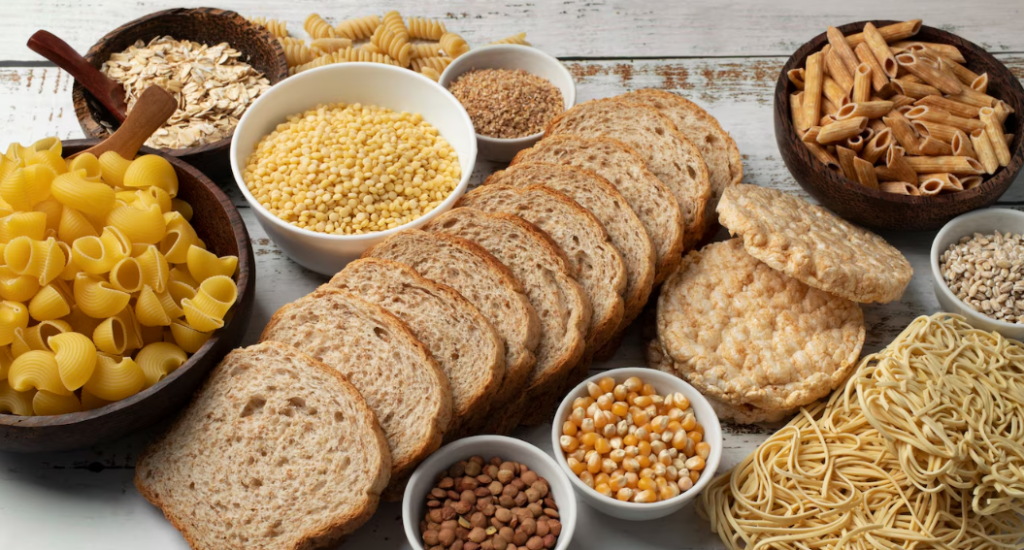In 2025, one of the most talked-about diet trends is the Glucose-Friendly Diet—a science-backed approach to eating that focuses on blood sugar stability over calorie counting or extreme restriction. Health influencers, nutritionists, and even doctors are recommending this approach for better energy, mood, weight management, and long-term health.
But what exactly is the Glucose-Friendly Diet? Why is it suddenly everywhere? And is it really better than keto, paleo, or intermittent fasting?
Let’s dive deep into this revolutionary way of eating that’s transforming the world of wellness.
What is the Glucose-Friendly Diet?
The Glucose-Friendly Diet is a balanced eating pattern that prioritizes keeping your blood sugar (glucose) levels stable throughout the day. Instead of cutting out food groups or obsessing over macros, it encourages smart food pairings, meal timing, and understanding how different foods impact your glucose levels.
This trend has gained momentum thanks to wearable tech like continuous glucose monitors (CGMs), which allow users to see real-time effects of food on their blood sugar.
Why is Glucose Stability So Important?
Fluctuating blood sugar levels can lead to:
-
Fatigue and brain fog
-
Cravings and overeating
-
Weight gain and belly fat
-
Mood swings and anxiety
-
Increased risk of type 2 diabetes and metabolic disorders
By eating in a glucose-friendly way, people report:
-
Sustained energy
-
Improved focus
-
Reduced cravings
-
Balanced mood
-
Healthier skin
-
Better sleep
No wonder it’s trending!
Key Principles of the Glucose-Friendly Diet
Here are the foundational tips of this diet:
1. Start the Day with Savory, Not Sweet
Eating something high in sugar or refined carbs in the morning spikes your blood sugar. A savory breakfast with protein + healthy fat + fiber is ideal.
Good options:
-
Eggs with avocado on whole grain toast
-
Greek yogurt with chia seeds and berries
-
Tofu scramble with spinach and mushrooms
2. Eat in the Right Order
This is one of the biggest breakthroughs in glucose science: the order in which you eat your food matters.
Correct order for meals:
-
Fiber (vegetables/salad)
-
Protein and fats
-
Carbs (bread, rice, pasta)
This sequence slows down glucose absorption and reduces blood sugar spikes.
3. Pair Carbs with Fiber or Protein
Instead of cutting carbs, pair them wisely.
Examples:
-
Have fruit with nut butter
-
Eat rice with lentils and leafy greens
-
Combine pasta with grilled chicken and steamed broccoli
4. Move After Meals
Even a 10-minute walk after eating helps bring down post-meal glucose levels significantly. Dancing, stretching, or light chores work too!
5. Include Vinegar Before High-Carb Meals
Studies have shown that apple cider vinegar or balsamic vinegar before meals can blunt the glucose spike.
Try mixing 1 tablespoon of vinegar in a glass of water 10 minutes before eating.
Sample Glucose-Friendly Meal Plan
Breakfast
-
Spinach and mushroom omelet
-
Whole grain toast with almond butter
-
Herbal tea or black coffee
Lunch
-
Grilled chicken salad with avocado, cucumber, and olive oil dressing
-
Quinoa on the side
Snack
-
Handful of nuts + one boiled egg
-
Or Greek yogurt with chia seeds
Dinner
-
Baked salmon
-
Roasted vegetables (broccoli, carrots, bell pepper)
-
Brown rice or sweet potato
Dessert (if you want!)
-
A small piece of dark chocolate
-
Or berries with cottage cheese
Why Is It Trending in 2025?
Several reasons:
-
Rise of Wearable Health Tech:
More people are using CGMs and seeing how food affects their bodies in real-time. -
Focus on Longevity & Prevention:
Instead of crash diets, people want sustainable, smart eating habits that support long-term health. -
Influencer and Expert Backing:
Dietitians, doctors, and wellness influencers like Jessie Inchauspé (The Glucose Goddess) have popularized this method on platforms like TikTok, Instagram, and YouTube. -
Better Mental Health:
Stable glucose = more stable moods, concentration, and anxiety levels, making this diet popular for mental wellness too.
The Science Backs It Up
Recent studies show that frequent glucose spikes are linked to:
-
Increased inflammation
-
Insulin resistance
-
Accelerated aging
By keeping glucose stable, you’re not just improving weight and energy—you’re also protecting your heart, liver, and brain.
Is It for Everyone?
Yes, the Glucose-Friendly Diet is safe and beneficial for most people, including those with:
-
Prediabetes or insulin resistance
-
PCOS
-
Fatty liver disease
-
Hormonal imbalances
-
Fatigue or energy crashes
However, people with specific medical conditions or on insulin therapy should consult their doctor before making changes.
Final Thoughts: Not Just a Trend, but a Transformation
The Glucose-Friendly Diet isn’t about restriction—it’s about understanding your body and supporting it with smarter choices. It’s flexible, science-based, and focused on feeling your best every single day.
Whether your goal is to lose weight, improve energy, prevent chronic illness, or just feel amazing—this might be the most sustainable and effective diet trend of 2025.

